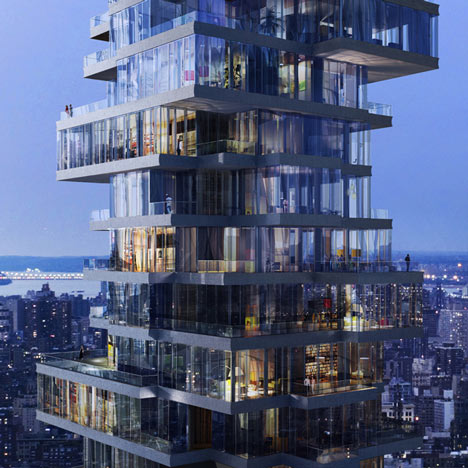 |
| Model and rendering from El País, May 22, 2017 |
Rogers Stirk Harbour+Partners will design the urban plan for a major new expansion of Madrid known as Distrito Castellana Norte.
There is still very little information on this move, the latest in the long history of the proposal to cover the tracks of the Chamartín Train Station with a massive development of housing and offices. But El País interviews Richard Rogers and his associated Simon Smithson on their basic ideas for their plan, still in an early stage (Smithson is son of Peter and Alison Smithson, and Project Architect for Madrid's Terminal 4 at Barajas Airport).
An earlier plan for the area by urban designer José María Ezquiaga was commissioned by the city of Madrid under former mayors of the conservative Popular Party (PP). This plan was on hold for many years due in large part to the economic crisis of 2008. But now the Madrid real estate market is returning to life, particularly in the area of prime office space, and the city wants to position itself to cash in on the fallout of Brexit, and make itself attractive to London financial institutions looking to relocate business inside the European Union.
The current city government, under a coalition of new left-wing parties, rejected the high density of the Ezquiaga plan. But it is under considerable pressure to get the project moving, and it is now in negotiations with the regional government of Madrid (PP) and the BBVA Bank, which controls the development rights for the project, for its revision. And this is the point where Rogers comes in.
Pablo Guimón
"El arquitecto Richard Rogers y su socio Simon Smithson, al frente del plan Distrito Castellana Norte, dialogan sobre la ambiciosa intervención urbanística en la capital"
El País, May 22, 2017
Comments received
Juan Manuel Fernández Alonso
May 31 at 5:44pm
David Cohn, la historia es bastante más extensa y con más actores. La densidad cuestionada no proviene del plan parcial Ezquiaga 2011 sino de la modificación del plan general en 2002, definida tras un primer máster plan de Bofill, destinada a sufragar infraestructuras urbanas adicionales a cargo de la operación. Entre medias hubo otro plan parcial 2004 sin tramitar. En 2015 no llegó a termino el plan parcial elaborado por RH arquitectos. Los tres tienen la misma intensidad edificatoria: 3'2 millones de m2 edificables con cerca de 17.000 viviendas. Entre medias algunas sentencias judiciales. Hoy se debate la intensidad que puede soportar el ámbito; las cargas infraestructurales asociadas a aquella y las que deben asumir los presupuestos de las distintas administraciones - autonómica, estatal y local- no los tejidos urbanos; la inconveniencia de prolongar la Castellana en el borde del casco histórico de Fuencarral; la posición del nuevo CBD en torno a la estación de Chamartín; la cualidad del nuevo tejido urbano y el modelo de gestión para una actuación de esa envergadura y duración. Veremos.
David Cohn
May 31 at 9:15pm
Gracias por tu explicación tan extendida. La verdad es que la entrevista no explica nada de nada. ¡Había olvidadao del primer plan de Bofill! El asunto merece un seguimiento más serio en los medios.
Juan Manuel Fernández Alonso
May 31 at 9:20pm
Es cierto. Es una operación muy compleja, con fuertes intereses cruzados actuando sobre la definición de nuevos tejidos urbanos en un contexto difícil. El largo tiempo empleado por todos los agentes participantes hasta ahora impide una mirada abierta para encontrar una buena solución de largo alcance temporal y territorial.











